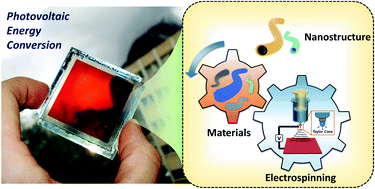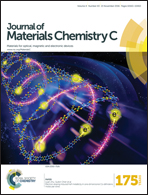Electrospun materials for solar energy conversion: innovations and trends
Abstract
This feature article discusses the highly promising and versatile electrospinning methods and electrospun materials employed for the fabrication of solar cells. Electrospinning is attractive for creating one dimensional mesostructured organic, inorganic and hybrid nanomaterials of controlled dimensions, prepared as random or oriented continuous nanofibers (NFs), with possibilities of ordered internal morphologies such as core–sheath, hollow or porous fibres, or even multichanneled microtube arrangements. The dimensionality, directionality and compositional flexibility of electrospun NFs and mats are increasingly being investigated for the targeted development of electrode and electrolyte materials, where the specific properties associated with nanoscale features such as high surface areas and aspect ratios, low density and high pore volume allow performance improvements in solar energy conversion devices.


 Please wait while we load your content...
Please wait while we load your content...